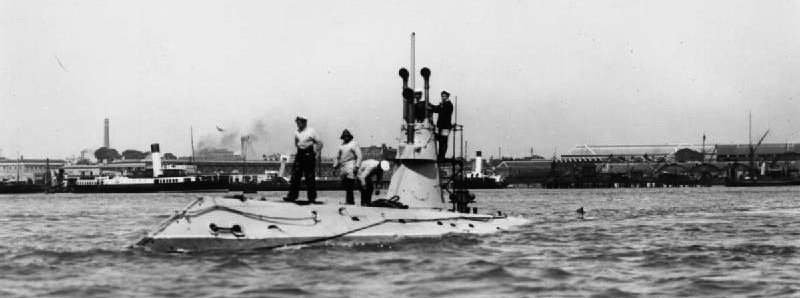
 Patrol Submersibles 1904-1906, service until 1918.
Patrol Submersibles 1904-1906, service until 1918.
A-1 to A-13, 13 completed total
WW1 British Submersibles:
Nordenfelt Class | Holland Class | A class | B class | C class | D class | E class | F class | G class | G class | H class | J class | K class | HMS Swordfish | HMS Nautilus | L Class | M class | R class | S classV class | W classThe A class submersibles were directly derived from the first Holland boats and truly the first properly serviceable class, also active in WWI unlike their forebears used only for training. All in all, thirteen were built by Vickers, Barrow-in-Furness between 1902 and 1905. They were an improvement over the “Holland class” themselves inspired by the US Plunger class made by the Electric Boat Co. They were twice as large, faster, with a much longer range and carried two torpedo tubes with reloads. Despite being from the same yard they were constantly upgraded from 1902 to 1905, until the next were in the B-class.
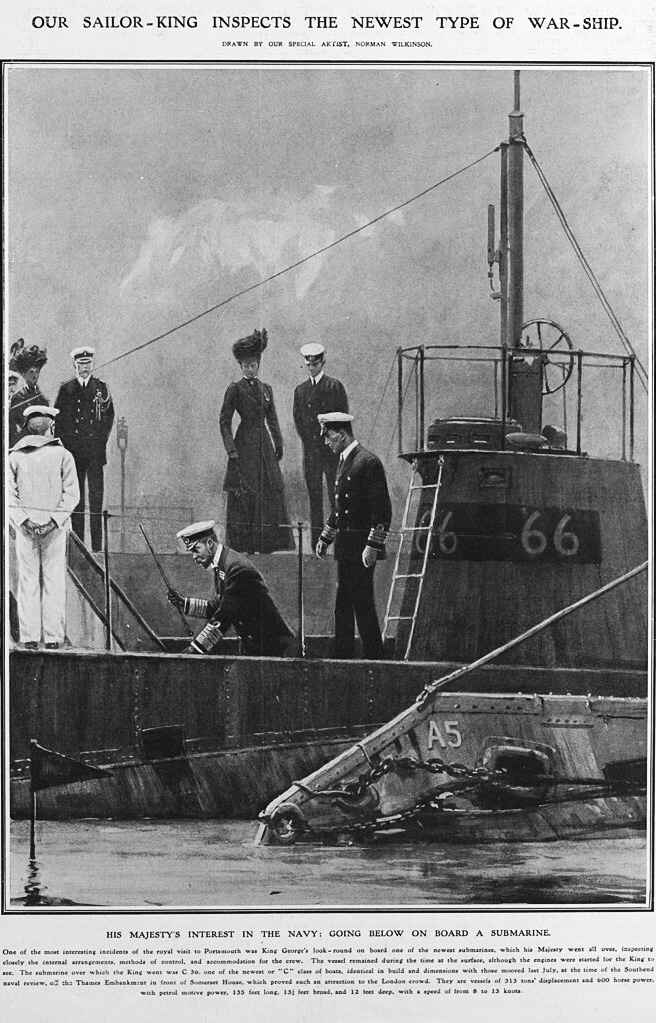
These, with the C-class were considered as a relatively successful “trilogy” that prepared the ground for the excellent WW1 E-class. The A-class nevertheless were plagued by numerous accidents during their operational history, many fatal to their crew like A1 sunk off Portsmouth in 1904 (collision) and A3 in 1912, then A7 lost in 1914 after diving into mud and A13 terminated for engine unreliability. The rest were stuck in harbour defence between Portsmouth, Devonport, Ardrossan, survived the war, went to training in 1918. #royalnavy #submersibles #submarines #britishnavy #aclasssubs
Development
The “Holland class” was an early -still reluctant- experiment on submarines no to be distanced by other navies in this new experimental field. The RN at the time, led by Admiral “Jackie” Fisher in quality of first sea Lord was worried about the French Young School enthusiasm about torpedo boats and submarines, multiplying prototypes and leading a vigorous competition program to adopt new production classes. Meanwhile on the other side of the “larger pond”, the Atlantic, the USN not yet engaged in a battleship craze and out of its old navy lethargy was thinking also of experimental developments and perhaps adoption by the Navy.
There was no shortage of inventors and past pioneers such as David Bushnell and Thomas Fulton among others. But in the 1890s, Simon Lake and Irish immigrant John Holland were among its most prominent. The latter created his company in Groton, Connecticut, as Electric Boat, and the small USS Holland (SS1) was tested as the fourth prototype (Holland VI 1897–1900) before being officially commissioned for a serie of trials.
Seemingly promising, the type was also adopted for a licence production in Britain, followed rapidly by a serie of five 110 tonnes tests boats. They were already much larger than the Holland boats.
All were made at Vickers, Barrow, under great secrecy, measuring just 63 ft 10 in x 11 ft 9 in (19.46 m x 3.58 m) but fitted with a problematic 160 hp Petrol engine and weak Electric motor for 8/7 knots and a range of just 250 nmi armed with a single 14 in (360 mm) torpedo tube with reloads.
The “Holland 1” and its class had its limitations but they impressed the Navy enough to commission a first fully proprietary British design patented by Vickers in 1902 – the A1.
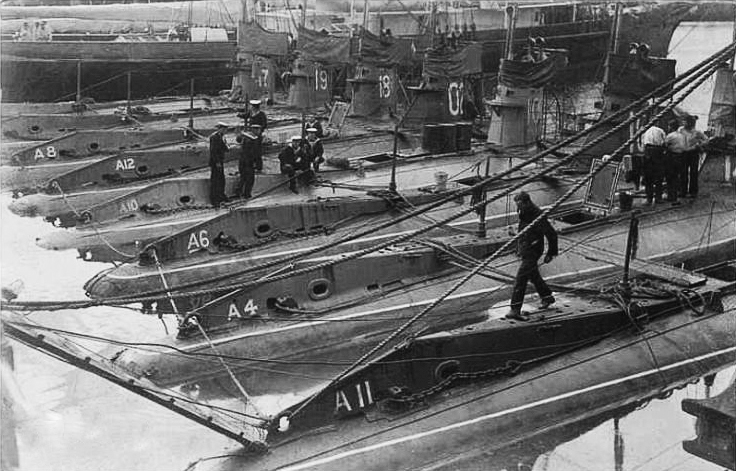
Design of the A class
This new class boasted a double propulsion system, electric drive submerged, improved dual petrol engines when surfaced. HMS A13 was the even first to test a diesel engine, but without success. It was however clear that gasoline emanation into such a confined environment were a potentially fatal flaw. Unlike the initial five Holland boats, the A class provided active service for two decades and were considered an achievement for Vickers despite revealing later as notoriously accident-prone. Retrospectively they would appear as a fully matured design that Vickers had just to improve.
Hull and general design
The A class were improved in all directions while keeping some traits from the earlier Holland class. They were larger, at 190 tons surfaced and 207 tons submerged versus 110 long tons (112 t) surfaced, 123 long tons (125 t) submerged, so almost twice, and were longer at 105 ft 0+1⁄2 in (32.02 m) overall (versus 19.46 m) larger at 12 ft 8+3⁄4 in (3.88 m) (versus 3.58 m) with also a deeper draught at 10 ft 8 in (3.25 m) when surfaced, but still the same needle-shaped hull with very long and fine entries forward and aft. There was a short triangle section deck built above the cyclinder on c80% of the hull’s lenght, boasting a narrow deck close to the amidship small conning tower.
The hull nose was rounded, and the tail cross-like with planes in all four directions. In short, she was shaped like a torpedo, with a small conning tower. The latter was equally well profiled for reducing underwater resistance, but later fitted at its rear by a platform on which 3-4 lof the crew could stand and see a bit further fore observing the surroundings, plus a small steering wheel. There was no double hull nor bulkheads. The Complement was of 11 men including a Lieutnant, XO, and petty officers, section chiefs and their attendants, one for the machinery, another for the armament, and those tasked of the diving and direction. A-7 had experimental hydroplanes in the conning tower for the first time; A-13 also innovated by being the first diesel submarine of the Royal Navy.
Powerplant
Propulsion relied on a new source compared to the Holland’s Vickers 160 hp Petrol engine. Vickers choosed the 16 cylinder Wolseley 600 hp (450 kW) petrol engine, which was believed to bring a substantial increase in surfaced performances. It was complemented by a 150 hp (110 kW) electric motor from Vickers, twice as much as on the Holland boats.
As a result, top speed was ported to 11+1⁄2 kn (21.3 km/h; 13.2 mph) surfaced and 6 knots (11 km/h; 6.9 mph) underwater, so better than 8 knots on the Holland boats, but one less knot underwater.
As the prior class, the A-class experiences a lot of issues with their powerplant.
Armament
It was superior to the Holland boats, in all aspects, with two tubes instead of one, and firing the much larger 18 in (460 mm) torpedoes in the bow, rather than a 12-inches model; There were considered at least much more potent against any ship. There were also four torpedoes carried total; two preloaded in the tubes and two spares behind.
⚙ specifications |
|
| Displacement | 190 tons surfaced, 207 tons submerged |
| Dimensions | Length 105 x 12 ft 8 in x 10 ft 8 in (32.02 x 3.88 x 3.25 m) |
| Propulsion | 16 cyl. Wolseley 600 hp (450 kW) petrol, 150 hp (110 kW) EM |
| Speed | 11+1⁄2 kn (21.3 km/h; 13.2 mph) surfaced, 6 kn (11 km/h; 6.9 mph) underwater |
| Range | 1,000 nmi (1,900 km; 1,200 mi) at 8.7 kn (16.1 km/h; 10.0 mph) surfaced |
| Armament | 2 × 18 in (460 mm) torpedo tubes (bow, four torpedoes) |
| Test depth | 100 feet (30.5 m) |
| Crew | 11 |
The original “widowmakers”
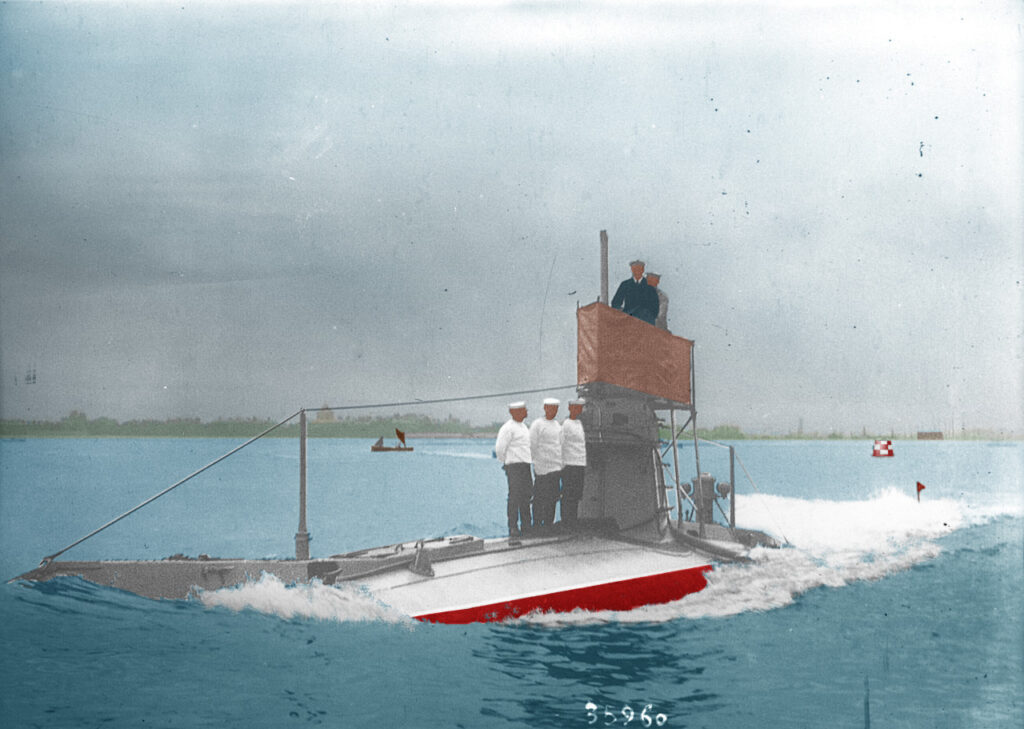
This submarine class was plagued by numerous accidents and failures; almost every boat in the class (A1, A3, A4, A5, A7, and A8) was involved in some sort of accident over the course of their operational history. Many were fatal to the crew, and resulted in the decommissioning of the submarine. A1 was sunk off Portsmouth on 18 March 1904, in collision with the liner Berwick Castle, but raised and put back into service before finally being sunk as a naval gunnery target in 1911, followed in 1912 by A3. A7 was lost in Whitsand Bay in 1914 after diving into mud.
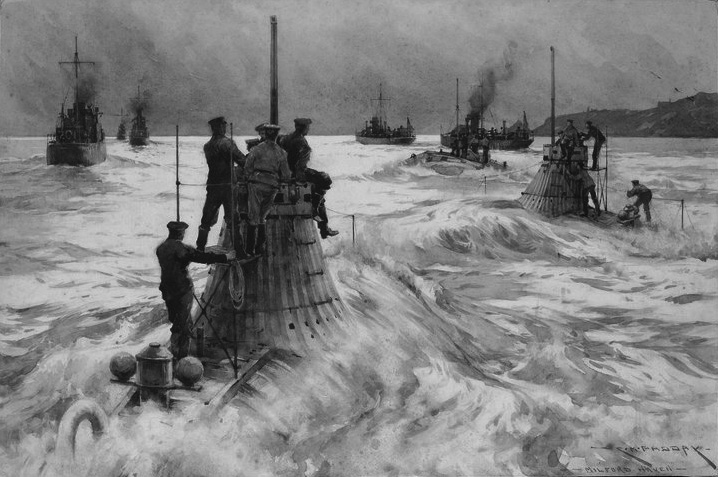
The sub division leaving Newford Haven in 1904

HMS A1 in September 1904
A13 was laid up in 1914 due to engine unreliability. A-1 was the first RN submarine lost in active service and A-7 was like her lost during a mock torpedo attack. Seven A class boats sank during their career, three with their entire crews but all were also raised, but A-7 and A-1 even sank a second time, sharing this dubious, macabre distinction with HL Hunley back in 1863, although the second time she was unmanned. These truly were the original “widowmakers”.
The remainder were confined during World War I for harbour defence, A2 and A4, A5 and A6 at Portsmouth, A8 and A9 at Devonport, and A10, A11 and A12 at Ardrossan. All survived the war and were converted to training in 1918 and sold in 1919–1920 except for A2, which was wrecked while awaiting disposal and finally sold in 1925. It was probably the worst class of submarines in British History while still being a real improvement. Things went better for ther next B and C-class, until the excellent E-class.
 A1
A1

A1 was the first built at Built Vickers, Sons & Maxim Ltd. Barrow-in-Furness, laid down on 19 February 1902, and launched on July 9, 1902, then commissioned on July 27, 1903. She was famously sunk on March 18, 1904 after being rammed by SS Berwick Castle of the Union-Castle Line while conducting a mock torpedo attack against HMS Juno, off the Isle of Wight. She sank with all hands. However she was raised on April 18, 1904 and repaired, served a few more years, and then she was sunk (fortunately unmanned) during a training exercise by August 1911 in the English Channel, 9 miles SE of Portsmouth. She was under automatic pilot whne it happened and if her position was known at the time, all efforts to locate her later went to nil.
She was rediscovered in 1989 by a local fisherman at Bracklesham Bay, c5 mi (8.0 km) away of the estimated location. Strong currents were suspected to have brought her that far. Divers tried to get a picture despite the murky waters. She was only partially flooded when sinking, and that partial buoyancy was the reason she was brought away by currents. She is now a protected wreck, but not grave.
 A2
A2
HMS A2 was built at Vickers, Sons & Maxim Ltd Barrow-in-Furness, launched on Apr. 15, 1903, commissioned on June 21, 1904. She was used for harbour service at Portsmouth during the war. She flooded after running aground in Bomb Ketch Lake by January 1920. Raised and sold Oct. 22, 1925 to H. J. Pounds, Portsmouth.
 A3
A3
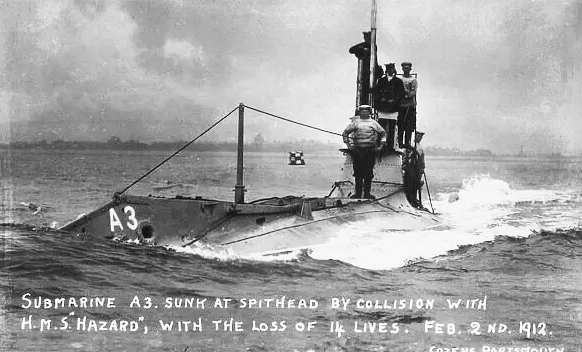
A3 was built also at Vickers (last time it’s mentioned), launched March 9, 1903 and commissioned on July 13, 1904. She sunk on Febuary 2, 1912, rammed by HMS Hazard, iconically a submarine depot ship, off the Isle of Wight, near East Princess Buoy. 14 went down with her. She was raised but not repaired and instead sunk as target May 17, 1912 by the battleship HMS St. Vincent in the English Channel, 12 miles east of Portland.
 A4
A4
A4 was launched June 9, 1903, commissioned Apr. 17, 1904. She sank on October 16, 1905 off Portsmouth during sound tests, as water came through an open ventilator used to signal. Still, she was about 90 feet below when the captain manage to have the ballast tanks blown in a way she could surface again. However if the crew escaped soon after, a battery explosion (Chlorine gas with seawater flloding the units) while under tow back to port caused her to sink again, but she was apparently raised again). After being repaired she served for more years as harbour boat and later for training at Portsmouth, and sold for scrap on 16 January 1920 to J. H. Lee, Bembridge in the Isle of Wight. Her captain in 1905 was Lieutenant Martin Nasmith, later awarded the Victoria Cross for his action on board HMS E11 in the Dardanelles campaign.
 A5
A5
A5 was launched on Mar. 3, 1904 and commissioned on Feb. 11, 1905. On February 16, 1905 these was a gasoline explosion while she was moored at Queenstown, Ireland, which claimed six crewmen. She sank but was raised and repaired and served at Portsmouth during the war, BU in its Dockyard in 1920.
 A6
A6
A6 was launched on March 3, 1904 and commissioned March 23, 1905. Nothing notable, but she ran aground on a sandbank in Sandown harbour, 31 July 1906, little damage. She was in harbour duty and training during the war, and was sold for BU Jan. 16, 1920 to J. H. Lee, Bembridge, Isle of Wight.
 A7
A7
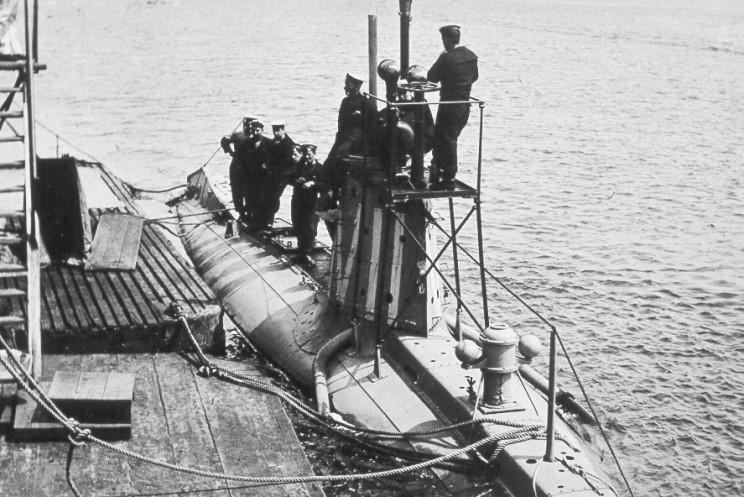
HMS A7 was launched on January 21, 1905, and commissioned by April 13, 1905. She sank in Whitsand Bay (Cornwall) on 16 January 1914 with all her crew during a dummy torpedo attack on HMS Only and Pygmy with her sister HMS A9. Witness saw she attempted to blow water from her ballast, trying to reach the surface, but failed. A buoy was left for a future recovery attemp, Pygmy returning to Plymouth to report and returned in the afternoon but could not locate the buoy whereas weather deteriorated. Five days later she was relocated under 121 ft (37 m), 20 ft (6.1 m) of her stern was buried into the mud, her bow just 33 ft (10 m) above, at 30°. Attempts to raise her failed the next month, the hawser installed freeing themselves each time as apparently her stern was too deeply buried. In 2001, she was declared a “Controlled Site” and grave, preventing unauthorized dives. There was a full archeological investigation of her wreck in 2014 (for the centennial of her loss). The site in the English Channel is 9 miles SW of Plymouth.
 A8
A8
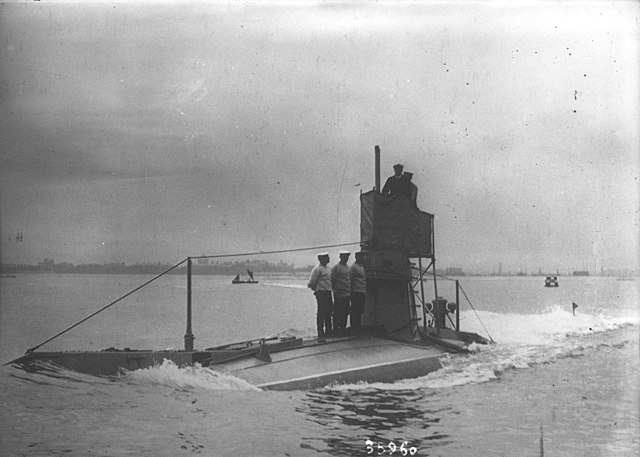
HMS A8 was launched Jan. 23, 1905 and commissioned May 8, 1905. She sank on June 8, 1905 due to a loose bow rivet while in an exercises in Plymouth Sound, with 15 sailors down with her, 4 survivors recued by the trawler Chanticleer. She was raised and repaired, recommissioned, used for training with her sister A9 in the First Submarine Flotilla, Devonport until early 1916. Kept in reserve, crew disbanded. She was sold for BU by October 18, 1920 to Phillips, Dartmouth, scrapped.
 A9
A9
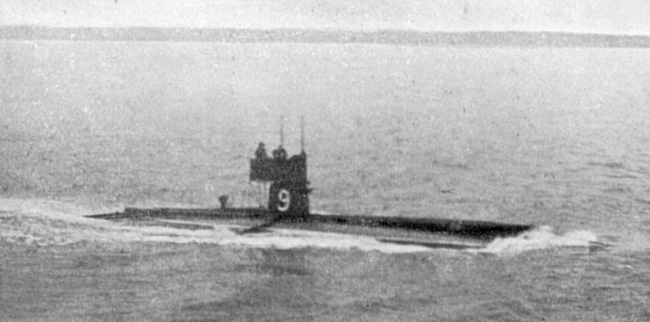
A9 was launched on March 8, 1905, and commissioned on May 8, 1905. Nothing to signal. Like A8, she was in the First Submarine Flotilla, Devonport until early 1916. Placed in reserve, sold Jan. 1920 and scrapped.
 A10
A10
A10 was launched on February 8, 1905, and commissioned on June 3, 1905. She collided with the battleship HMS Empress of India while in Plymouth Sound, 30 April 1906. She did not sank, no casualty but was repaired. Based in Scotland during the war. She sunk in March 17, 1917 while tied up at HMS Pactolus while in Eglington Dock, Ardrossan (Scotland). There was none aboard and thus no casualties. She was raised but never returned to service that late into the war. Instead she was placed in reserve, and sold on April 1, 1919 to Ardrossan Drydock Co. to be scrapped.
 A11
A11
A11 was launched on March 8, 1905, and commissioned July 11, 1905. On 7 September 1910 she collided with a barge when leaving Portsmouth. The barge sunk but her two crew member were rescued, while A11’s bow was repaired later. In February 1913, A11 was based at Lamlash, Isle of Arran, west coast of Scotland. She was sold on May 1920 and scrapped at Adrossan.
 A12
A12
A12 was launched on March 8, 1905, and commissioned on September 23, 1905. Nothong of note. She was sold in January 16, 1920 to J. H. Lee, Bembridge, Isle of Wight and scrapped.
 A13
A13
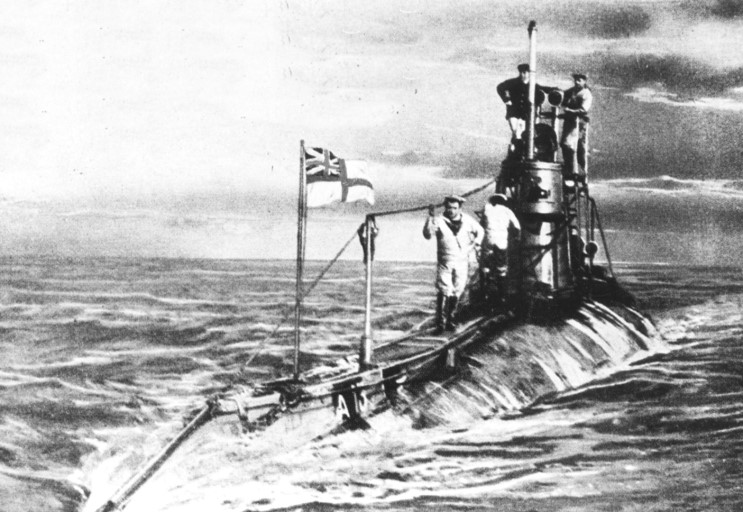
A13 was launched Apr. 18, 1905, and commissioned June 22, 1908. Sold in 1920 and scrapped.
Read More/Src
Books
Akermann, Paul (2002). Encyclopaedia of British Submarines 1901–1955 (reprint of the 1989 ed.). Periscope Publishing.
Gardiner, Robert & Gray, Randal, eds. (1985). Conway’s All the World’s Fighting Ships 1906–1921. NIP
Harrison, A. N. (January 1979). “The Development of HM Submarines From Holland No. 1 (1901) to Porpoise (1930) (BR3043)”. Barrow in Furness Branch.
Kemp, Paul & Jung, Peter (1989). “Five Broken Down B Boats: British Submarine Operations in the Northern Adriatic 1915–1917”.
Wilson, Michael (1981). “The British ‘B’ Class Submarine”. Roberts, John (ed.). Warship Volume V. Conway Maritime Press.
Links
britsub.net Generic
rnsubs.co.uk/ A class
en.wikipedia.org/ British A class submarine
commons.wikimedia.org British A class submarines
http://www.maritimequest.com/warship_directory/great_britain/submarines/pages/class_overviews/a_class_1902.htm


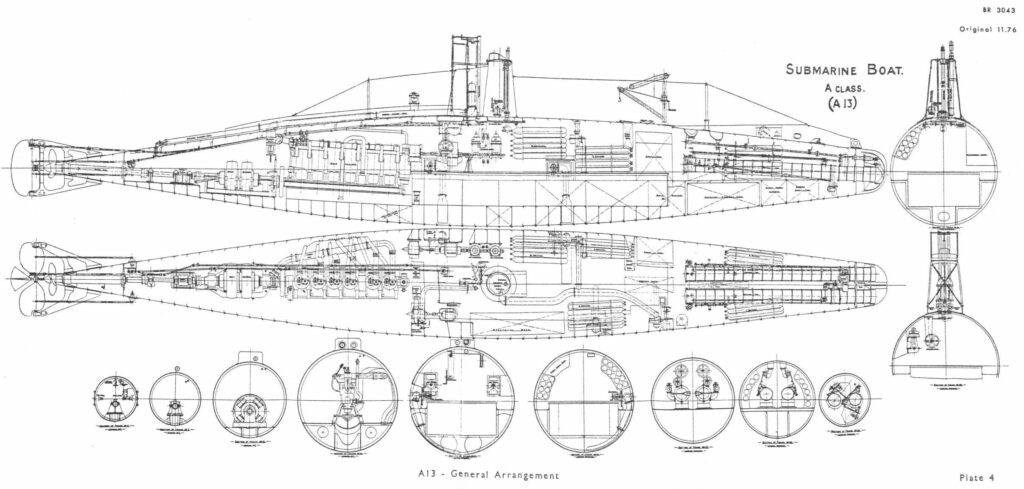

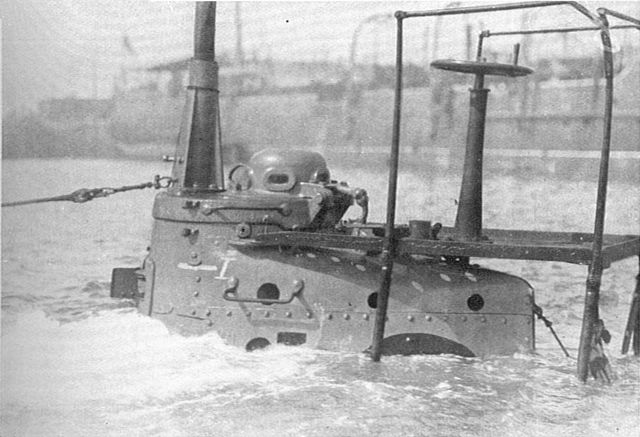
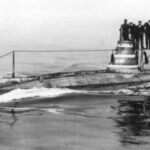
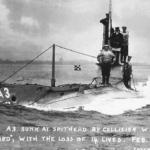
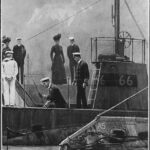
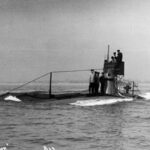
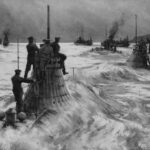
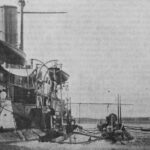
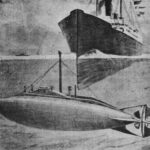

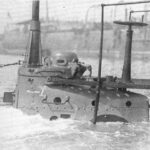
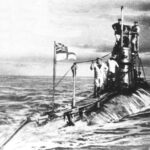
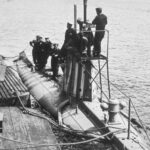
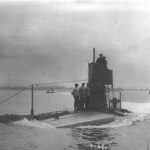
 Latest Facebook Entry -
Latest Facebook Entry -  X(Tweeter) Naval Encyclopedia's deck archive
X(Tweeter) Naval Encyclopedia's deck archive Instagram (@navalencyc)
Instagram (@navalencyc)





 French Navy
French Navy Royal Navy
Royal Navy Russian Navy
Russian Navy Armada Espanola
Armada Espanola Austrian Navy
Austrian Navy K.u.K. Kriegsmarine
K.u.K. Kriegsmarine Dansk Marine
Dansk Marine Nautiko Hellenon
Nautiko Hellenon Koninklije Marine 1870
Koninklije Marine 1870 Marinha do Brasil
Marinha do Brasil Osmanlı Donanması
Osmanlı Donanması Marina Do Peru
Marina Do Peru Marinha do Portugal
Marinha do Portugal Regia Marina 1870
Regia Marina 1870 Nihhon Kaigun 1870
Nihhon Kaigun 1870 Preußische Marine 1870
Preußische Marine 1870 Russkiy Flot 1870
Russkiy Flot 1870 Svenska marinen
Svenska marinen Søværnet
Søværnet Union Navy
Union Navy Confederate Navy
Confederate Navy Armada de Argentina
Armada de Argentina Imperial Chinese Navy
Imperial Chinese Navy Marinha do Portugal
Marinha do Portugal Mexico
Mexico Kaiserliche Marine
Kaiserliche Marine 1898 US Navy
1898 US Navy Sovietskiy Flot
Sovietskiy Flot Royal Canadian Navy
Royal Canadian Navy Royal Australian Navy
Royal Australian Navy RNZN Fleet
RNZN Fleet Chinese Navy 1937
Chinese Navy 1937 Kriegsmarine
Kriegsmarine Chilean Navy
Chilean Navy Danish Navy
Danish Navy Finnish Navy
Finnish Navy Hellenic Navy
Hellenic Navy Polish Navy
Polish Navy Romanian Navy
Romanian Navy Turkish Navy
Turkish Navy Royal Yugoslav Navy
Royal Yugoslav Navy Royal Thai Navy
Royal Thai Navy Minor Navies
Minor Navies Albania
Albania Austria
Austria Belgium
Belgium Columbia
Columbia Costa Rica
Costa Rica Cuba
Cuba Czechoslovakia
Czechoslovakia Dominican Republic
Dominican Republic Haiti
Haiti Hungary
Hungary Honduras
Honduras Estonia
Estonia Iceland
Iceland Eire
Eire Equador
Equador Iran
Iran Iraq
Iraq Latvia
Latvia Liberia
Liberia Lithuania
Lithuania Mandchukuo
Mandchukuo Morocco
Morocco Nicaragua
Nicaragua Persia
Persia San Salvador
San Salvador Sarawak
Sarawak Uruguay
Uruguay Venezuela
Venezuela Zanzibar
Zanzibar Warsaw Pact Navies
Warsaw Pact Navies Bulgaria
Bulgaria Hungary
Hungary

 Bundesmarine
Bundesmarine Dutch Navy
Dutch Navy Hellenic Navy
Hellenic Navy Marina Militare
Marina Militare Yugoslav Navy
Yugoslav Navy Chinese Navy
Chinese Navy Indian Navy
Indian Navy Indonesian Navy
Indonesian Navy JMSDF
JMSDF North Korean Navy
North Korean Navy Pakistani Navy
Pakistani Navy Philippines Navy
Philippines Navy ROKN
ROKN Rep. of Singapore Navy
Rep. of Singapore Navy Taiwanese Navy
Taiwanese Navy IDF Navy
IDF Navy Saudi Navy
Saudi Navy Royal New Zealand Navy
Royal New Zealand Navy Egyptian Navy
Egyptian Navy South African Navy
South African Navy






























 Ukrainian Navy
Ukrainian Navy dbodesign
dbodesign